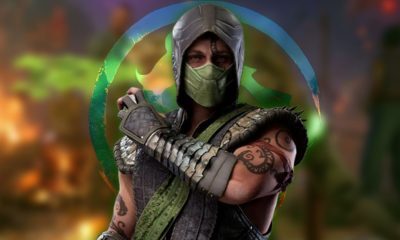

The Epic 18th Century Quest That Revealed the True Shape of the Earth
Follow Us @
The Epic 18th Century Quest That Revealed the True Shape of the Earth
– best Ai and Ai related updates, fresh and up to date Ai technologies and best Ai Opportunities near you!
Today, when we use a GPS to guide us during a trip, to locate a nearby restaurant, or even to wait comfortably at home while a delivery person brings us a pizza, we have no idea of the epic stories that underpinned our scientific and technological development.
One such story takes us back to the 18th century. Long before the invention of GPS, delivery apps, and even motorcycle couriers, a French expedition took a group of scientists to the other side of the planet on an epic mission: to reveal the true shape of the Earth. And they did so using the most precise measuring instruments available at the time: the stars.
The French Geodesic Mission, carried out between 1735 and 1743, was one of the first major scientific expeditions on the planet and one that marked the history of science. At that time, the discussion about the true shape of the Earth was much more than a pseudoscientific controversy on the Internet. Knowing the geometry of our planet could help improve our navigational techniques, improve our maps and resolve a dispute between two great geniuses of Science.
Since the end of the 17th century, two competing theories have been trying to explain the force of gravity. On one side, we had the model of the Frenchman René Descartes, who argued that gravity was caused by vortices in a universal fluid called ether. On the other side, the Englishman Isaac Newton argued that gravity was a force of attraction that acted at a distance between bodies with mass.


If Descartes were correct, the pressure of the vortices at the poles would be less, which would make the Earth elongated like a melon. According to Newton's theory, the gravitational force would be the same, but the rotation of the planet would make the Earth flattened like a tangerine. And that's why the Paris Academy of Sciences decided to settle this matter by measuring the shape of the Earth.
To accomplish this feat, two expeditions were formed: one to Lapland, the land of Santa Claus, and another that crossed the ocean to Ecuador in South America. All of this, using the most modern resources available at the time: a smelly ship, donkey backs and very thin French shoes for long walks in the jungle.
Of course, you can imagine that it was an adventure full of setbacks. But it was more than that…
The French Geodesic Mission that set sail for South America included young but renowned scientists such as Louis Godin, Pierre Bouguer and Charles Marie de La Condamine. The team set sail by ship on an epic adventure, sailing from Europe to Central America. The scientists crossed Panama on donkeys until they reached the Pacific Ocean, where they set sail again for South America, more precisely to the region of the Audiencia of Quito, lands under the rule of the Spanish crown, and where Ecuador is today.


The idea was simple: astronomers were already able to measure the latitude of a location with good precision from the stars. If they could measure the distance equivalent to one degree of latitude, and repeat this measurement at both the equator and the pole, they could determine the shape of the Earth. If the distance were greater at the equator, our planet would be elongated, and if it were smaller, it would be flattened at the poles. And the region of Quito was chosen for the equatorial measurement because among the options available in South America and Africa, that was the one with the best structure. But it wasn't that good…
The fearless scientists left the boulevards of Paris to venture into mountainous terrain, under the dense vegetation of the jungle, facing unpredictable weather, unknown diseases and a lack of resources. To complicate matters further, the measurements had to be made from the highest peaks of the Andes Mountains. The scientists and their assistants spent hours on end taking measurements and astronomical observations, often in extremely adverse conditions. Their instruments were quadrants, theodolites and the stars, which they observed with their telescopes to determine their precise latitudes.

Distance measurements were made by triangulation. From a known distance and the angles measured between three different observation points, it was possible to calculate the distances of the other sides of the triangle. In this way, starting from a first measurement, it was possible to calculate all the other measurements by triangulation. The problem was that, for each measurement, an adventure through the jungle, steep climbs and icy climbs to the observation point was necessary. And so, the work that they planned to complete in one year, took a long seven years to complete.
After measuring a distance of almost 400 km over the Andes Mountains between Quito and Cuenca, and accurately calculating the latitudes of the reference points, the adventurous French scientists were finally able to return home. But with their resources completely exhausted, only Bouguer returned to Paris via the normal route, via Panama. Godin stayed behind and La Condamine decided to take on another epic adventure. He crossed Brazil, sailing along the waters of the Amazon River to the Atlantic, where he embarked for Europe from Cayenne.


Despite all the setbacks, the team's perseverance was rewarded. By comparing measurements of the Earth's curvature at the equator with those from the Lapland expedition, the scientists came to a conclusion: the Earth was slightly flattened at the poles, confirming Newton's gravitation.
The results of that scientific adventure to South America had a profound impact on science. The confirmation of Newtonian theory revolutionized Physics and Astronomy, paving the way for new discoveries about the force of gravity and the dynamics of the Solar System.
That mission shows us how astronomy has always been present in the history of humanity, helping to answer some of the fundamental questions about our place in the Universe. The French Geodesic Mission proved to be an incredible saga of these “young nerds” from the 18th century, who left Paris, leaving the comfort of their homes and the warmth of their families, crossed the ocean and faced countless challenges to reveal to humanity the true shape of the Earth.
The Epic 18th Century Quest That Revealed the True Shape of the Earth
Follow AFRILATEST on Google News and receive alerts for the main trending Law and layers near you, accident lawyers, insurance lawyer, robotic Lawyer and lots more! The Epic 18th Century Quest That Revealed the True Shape of the Earth
SHARE POST AND EARN REWARDS:
Join our Audience reward campaign and make money reading articles, shares, likes and comment >> Join reward Program
FIRST TIME REACTIONS:
Be the first to leave us a comment – The Epic 18th Century Quest That Revealed the True Shape of the Earth
, down the comment section. click allow to follow this topic and get firsthand daily updates.
JOIN US ON OUR SOCIAL MEDIA: << FACEBOOK >> | << WHATSAPP >> | << TELEGRAM >> | << TWITTER >
The Epic 18th Century Quest That Revealed the True Shape of the Earth
#Epic #18th #Century #Quest #Revealed #True #Shape #Earth



 Online Earning2 months ago
Online Earning2 months agoSee the details about the fall of Bitcoins



 Trending Game3 months ago
Trending Game3 months agoDying Light 2 – 7 tips to do well in the zombie adventure



 USA today entertainment3 months ago
USA today entertainment3 months agoBLACKPINK's Lisa creates history with solo single



 Fashion3 months ago
Fashion3 months agoLearn different ways to use scarves; new bet for the summer of 2024



 Culture2 months ago
Culture2 months agoDiscover the Nike Run SP routes



 Trending Game3 months ago
Trending Game3 months agoDRAGON BALL Sparkling! ZERO rips through the skies on October 11th



 Trending Game3 months ago
Trending Game3 months agoSeason of the Reptile Arrives in Mortal Kombat 1 with Trailer



 Trending Game3 months ago
Trending Game3 months agoVictory Heat on Asphalt: Victory Heat Rally Is Coming!



























